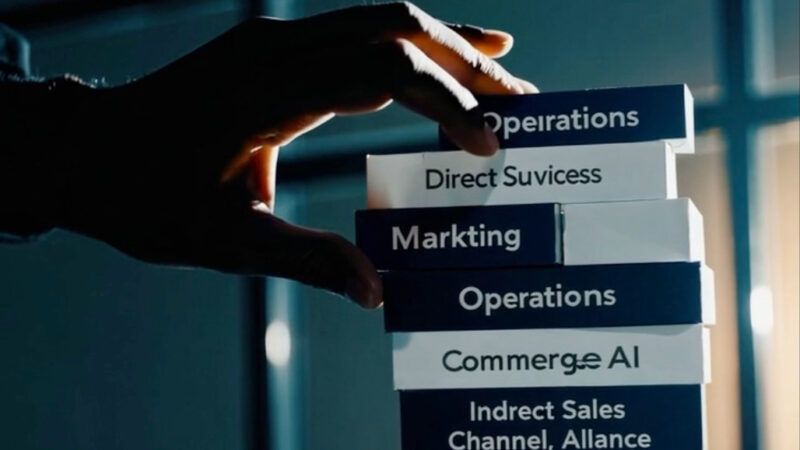Chapter 17 Starts
WOW. What a ride!
I write this as I complete Chapter 16; namely, my time at CSC comes to a close.
Infochimps, a CSC Company
I think back to the day I called Mike Lawrie, CEO of CSC, back in June 2013. I was the CEO of Infochimps, a Big Data Cloud company.
Me: “Mike, I’m looking to expand my board as we prepare to close our Series B financing.”
Mike: “Jim, I can’t take any board positions myself. I’m busy with CSC. What is it you guys do?”
As I explained my fledgeling startup business, it became clear to me that Mike and his senior team were investing into Big Data, the space I was disrupting.
Mike: “Jim, you need to talk to Dan Hushon, our CTO. It sounds like what you’re doing in building out a network of datacenters with Big Data analytic services is exactly what we need to do with our 50 CSC datacenters.”
Me: “Sorry Mike, you’re too big. Talk to me in two years.”
Having done this several times, I knew that big companies don’t always partner well with small companies. Fast forward to my discussion with Dan Hushon. He and I aligned around the use of SUPERNAPS (datacenters that are certified Tier IV in both design and facility categories) to deploy data analytics services to Global 3000 customers who had already begun their journey in datacenter modernization, consolidation and datacenter outsourcing. The idea of co-locating our analytics services with the data already housed in CSC’s datacenters made sense. But, I was still not sold on working with CSC.
Dan: “You guys are doing exactly what we need to do. How can we work together?”
Me: “Forget it. I told Mike the same thing. Talk to us in two years. We’re closing a round of financing. Let us ramp a bit and we’ll reengage later.”
Dan: “We should just buy you.”
After that comment, the CSC chapter began. I had realized quickly that we had positioned ourselves perfectly in the market and that it aligned 100% with CSC. We were acquired by CSC August 5th, 2013, with our focus on disrupting the CSC client base with a new Big Data Platform as a Service offering.
I had created a carefully architected 6-month integration plan that started with partnering with CSC for one quarter, followed carefully with the integration into their Big Data & Analytics business unit in the second quarter.
Big Data & Analytics
After a successful integration of Infochimps, I was ready to leave. I had finished my job establishing Infochimps as the engine for the BD&A business unit growth (we exceeded 50% YoY), adding the Big Data Platform as a Service to its offering mix. The various business functions of Infochimps were carefully assimilated into their corresponding BU business functions – marketing, sales, consulting, delivery, offering/product management, etc. Then it came time for my next conversation with Mike at a CSC sales conference in May 2014.
Mike: “I understand you’re ready to leave.”
Me: “Yeah. I’ve completed my integration. It’s time.”
Mike: “I have another idea. How about you run the Big Data & Analytics BU for me?”
Me: “Why me Mike? My profile is more aligned to being the CEO of an emerging company. I’ve finished my job here.”
Mike: “Our biggest challenge at CSC, moving forward, will be it’s culture. I need leadership that understands how to energize the workforce with vision and execution that helps us shift from ‘optimizing’ to ‘growth’.”
Me: “Shifting from the ‘old CSC culture’ to the ‘new CSC culture’….from ‘optimizing’ to ‘growth’….hmmm. Ok, I’m in.”
I then spent the next 18 months leading the fastest growing segment of CSC. I was a part of Mike’s executive management system for the entire time, and this turned out to be one of the most amazing experiences an executive could have.
People, in general, have inflection points in their careers, being influenced by an individual/mentor, a significant event in the business, something life-changing. Well, I’d put this experience in that category.
I’m still amazed with Lawrie’s management system which facilitated one of the most amazing turn-around one could witness first hand. Taking over a company that had many silos globally with virtually no visibility into their businesses, 15 layers with over 370 VPs, no money on the balance sheet, bad credit….a company that was, essentially, near bankruptcy. I can imagine the conversations with the Board when Mike first came in. If I had been a fly on the wall, I could imagine hearing:
“I give us a 25% probability of turning this around.”
The stock went from $27 at the time of his announcement to an all-time high of $70 just before the split of CSC and CSRA. Mike managed to reduce management to just 8 layers, reduced some 370 VPs down to 70, 50 of which who were new, replaced the entire senior team, put $2B on the balance sheet, and then delivered 9.5% EBITA with renewed credit ratings. Every business function inside the company was reinvented. CSC’s market cap went from around $4B just before he took over to over $9.8B by the time of the split. He and his new senior team created almost $6B in shareholder value, which is not achieved by many.
Witnessing the CSC transformation as part of his senior team is also not experienced by many – this was not only an opportunity, it was a privilege that I didn’t take lightly.
Digital Applications
As my contributions to the BD&A business within the Emerging Business Group (EBG) came to a close in August 2015, I was, once again, planning my departure….my second attempt to leave.
At this time, Mike and members of the senior team where planning to combine two parts of the business, that later became the Digital Applications business. I was approached by two of Mike’s EVPs – Jim Smith, EVP of Global Business Services, and Dave Zolet, EVP of the Americas Region. As I saw it, I could either leave to lead a mid-size company as its CEO, or accept a new challenge at CSC and work for a couple dynamic EVPs. Long story short, both Jim and Dave convinced me to help them.
Jim Smith: “I want to work with you Jim. Help us with the largest square in the business.”
David Zolet: “The Americas is the largest region in the world, and the new Digital Applications business will be the most important line of business.”
In September 2015, we were tasked with combining what previously was the Enterprise Software Consulting business with CSC’s Applications Delivery business – a combined $2B business globally and $1B in the Americas.
Bumping into Mike in the hallways at the corporate offices in Falls Church, Virginia, Mike catches me talking to the head of Digital Application HR talking about….yeap, my favorite topic: Cultural change.
I had just finished with my offsite with my senior team in the newly formed Digital Applications organization (over 35 direct reports). I’m giving the head of HR my typical cordial hello….in this case a hug, talking about organizational changes which I was pondering for Q4 (the new business unit was being created through Q3 and I needed 3 months to get the “house in order”).
Mike approaches and he mimics the HR VP and me by putting his arms out. So why not, I turn and give Mike a hug as well, suddenly feeling awkward. If you have worked with Mike, you’ll appreciate it when I say, this was probably a first (at least publicly). In any case, Mike and I have a brief exchange:
Mike: “We’re counting on you. You have a huge challenge on your hands.”
Me: “I know. I won’t let you down.”
Well, Mike wasn’t kidding. I had 7,000 challenges on my hands. That was the size of the team, and we needed to come together under a new suite of application services that aligned with our customer’s need to manage their portfolios holistically. The main application platforms, of course, included legacy on IBM, SAP, Oracle, and Microsoft; as well as emerging next-gen enterprise SaaS applications using Workday, Salesforce, and ServiceNow. “All we needed to do” was “simply” rationalize every one of our customers’ application portfolios to determine what to replace, rebuild, refactor, rehost, revise, or retire.
Application portfolios varied in where they fell in their life cycle and what platform they were deployed on, and it was definitely a challenge on how to rise above the technology and focus on the application rationalization. However, that wasn’t the real challenge in the business. The real challenge was that my business was predominantly time & material (“staff aug”) across over a 100 of the fortune 500 in the Americas. We were essentially in the business which I described as “Talent Solutions”.
This meant that our largest near-term opportunity was to improve our ability to recruit, onboard, and place talent into our existing accounts. But not just place “talent” but place the “best talent”. I figured that if I could grow the staff aug business by 5%, we could have the same business impact as growing the consulting business by 20%. As many in the business know, growing a headcount business by 5% differs quite a bit when compared to creating a differentiating C-suite consulting services and growing by 20%. And, in the end, the reality is that we needed to do both.
Fast forward to the end of Q3, we managed to get line of sight to as much as 12% growth in the core business (not counting customer terminations or, in general, one-timers). Everyone understands that customer happiness = protected base (e.g. no terminations, no completions without follow-on work, no price-downs, etc.). So, besides the typical operational hygiene improvements, we focused on the real jewel…the breakthrough opportunity.
If we inspired our workforce to embrace a culture of creativity, innovation, “glass-half full” thinking, we could, in term, inspire our customers. Our customers would begin thinking that the culture of CSC was becoming more aligned with their success. This meant moving from a position as a “vendor” to a position as a “strategic partner”. In some cases, this meant that we would have to “fire the customer” and get out of a “race to the bottom” offshore $/hr battle with Indian pure plays. This wouldn’t be easy, because it meant leaving revenue on the table (but it meant leaving low, if not unprofitable revenue on the table).
By the end of 3Q16, the Digital Applications team came together and took this from concept to reality….and customers began to notice, accounts began to see us differently. In fact, we began to see ourselves differently. If you’re curious, listen in on CSC’s report for the third quarter 2016, Tuesday February 9, or IDC’s point of view in “CSC 3Q FY16: Quarterly revenue down 10.2%, operating income margin down 60 basis points — Meet the new CSC…same as the old CSC?”
Why Chapter 17?
So why leave CSC now? The momentum sounds positive, and the experiences great. Well, I come back to the culture. Remember when Mike said, “Our biggest challenge at CSC, moving forward, will be it’s culture.”? As I reflect on this for any company, CSC or otherwise, I can’t stop thinking about the difference between management and leadership…or managers and leaders. I digress only a little.
The main difference is that leaders have people follow them while managers have people who work for them. The manager’s job is to plan, organize and coordinate. The leader’s job is to inspire and motivate. In his 1989 book “On Becoming a Leader,” Warren Bennis composed a list of the differences:
- The manager administers; the leader innovates.
- The manager is a copy; the leader is an original.
- The manager maintains; the leader develops.
- The manager focuses on systems and structure; the leader focuses on people.
- The manager relies on control; the leader inspires trust.
- The manager has a short-range view; the leader has a long-range perspective.
- The manager asks how and when; the leader asks what and why.
- The manager has his or her eye always on the bottom line; the leader’s eye is on the horizon.
- The manager imitates; the leader originates.
- The manager accepts the status quo; the leader challenges it.
- The manager is the classic good soldier; the leader is his or her own person.
- The manager does things right; the leader does the right thing.
In short, I aspire to lead. Thus, it’s finally time. I’m off to Chapter 17, which will have much more leadership than management in it. The ride was great, but it’s time to get back to disruption and it’s time to thrive with leadership.
Make sense?
For those interested. Here is a recap of my “chapters”:
- Chapter 1: Lockheed Martin
- Chapter 2: Digital Sound Corporation
- Chapter 3: NCR
- Chapter 4: AT&T
- Chapter 5: Teradata
- Chapter 6: Startup 1 – Convergence Design
- Chapter 7: Startup 2 – INCEP
- Chapter 8: Startup 3 – Integral
- Chapter 9: Startup 4 – Eyespot
- Chapter 10: Startup 5 – StackIQ
- Chapter 11: Startup 6 – SIOS
- Chapter 12: Startup 7 – PARC (led to Quantiply)
- Chapter 13: Startup 8 – Infochimps
- Chapter 14: CSC – Infochimps, a CSC Company
- Chapter 15: CSC – Big Data & Analytics
- Chapter 16: CSC – Digital Applications





One thought on “Chapter 17 Starts”
Comments are closed.